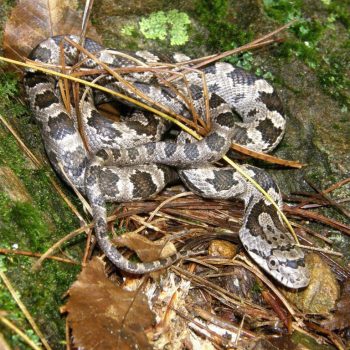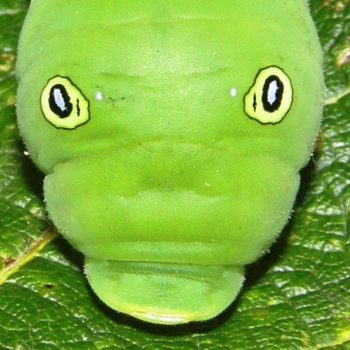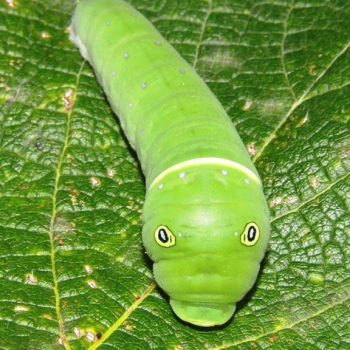
- Juvenile black rat snake
- Red eft
- Tanager male in summer
- Carolina rose fruit
- Firebush fruit
- Blue-tailed skink
- Tiger swallowtail caterpillar close-up
- Tiger swallowtail caterpillar
- Bucket trap for skinks
- Snake Plant Flower Winter Bloom
Spring is the time for many creatures to make love and have lots of babies. The rapid flush of plant growth and emergence of prey in spring makes circumstances especially suitable for reproduction. Two flower beetles mating on a daisy illustrate the procreative act underway across all phyla. Some northern water snakes that are normally placid are in a frenzy of mating activity even while sunning on a log. There is one large female surrounded by a number of smaller males.
Birds are producing many eggs and one of the more unusual clutches is shown in the photo of a bluebird nest with two speckled cowbird eggs in with the four bluebird eggs. Tracey Will sent me this from her backyard in Georgia- I have never seen this occur on our VA farm. Isn’t it interesting that the adult bluebirds do not recognize the totally different color of the parasitic eggs and may often end up raising the cowbirds instead of their own offspring.
Some babies already hatched are robins and mockingbirds in adjacent bushes in our yard. I am always surprised at how difficult it is to identify young birds in the nest. Without feathers they are all so similar and many have yellow gapes to attract food from the parents. Feed me, feed me they seem to be saying as loudly as possible! Until the adults arrive with food the babies lie very still to avoid attracting the attention of predators.
We were excited this week to have four adorable killdeer babies appear on our driveway. They are so cute but so fragile and helpless against predators. The parents will attempt to lure predators away with the broken wing display, feigning injury. But their best defense is their coloration which blends in with small rocks and dirt, but not grass. These plovers make a nest, if you can call it that, simply among the stones in a bare spot and the eggs are well camouflaged if the adult is not incubating. It seems a strange lifestyle but their closest relatives live on beaches so the killdeer looks for stony open ground to make its home. This often turns out to be a parking lot or driveway so they can need our help in protecting their family.
There are redwing nests in our marshes and tall grassy fields and many young have left the nest and are perched on grass stems as shown in this photo. The adults watch them carefully and protest very loudly if you approach their precious young. The young turkey poults that hatched out in these same fields are now following their Moms around and learning how to forage for insects. I saw this group as they ran down the rut of a roadway that crosses our field. They are vulnerable until they can fly, but they are quite good at hiding.
We have had a very large crop of baby rabbits this year and the predators such as red-tailed hawks are undoubtedly enjoying this abundance of prey. Since I have decided to enjoy the rabbits instead of shooting them to diminish their damage to the garden and flower beds, it is interesting to observe what they eat and to watch their antics. Indeed it seems that the chipmunks, voles and deer may be much more damaging to most of our plantings than the rabbits. If I were dependent on a garden for survival I would not likely be so tolerant of the herbivores, so it is easy to understand how a real farmer would see them as varmints.
So enjoy the wonderful spring babies while they are here. They will soon enough be grown up or in the belly of a predator, both of which are important futures for the health of the ecosystem.
Bill Dunson, Englewood, FL & Galax, VA
wdunson@comcast.net










